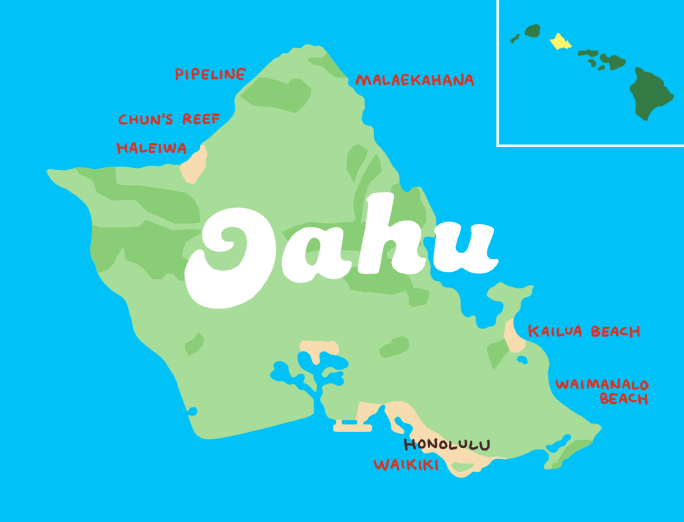Beyond Pipe: Where The Rest Of Us Can Surf

Surfing Pipeline is for experts only, said Hawaiian Water Patrol’s Brian Keaulana. It’s “like skiing down Mount Everest.” So where should the rest of us go? Keaulana, a surf safety expert, and Patrick Caldwell, a surf forecaster with the National Oceanic and Atmospheric Administration, offer advice on spots more appropriate for beginners or first-time visitors to Oahu. Even these spots are not without their risks.

Illustration by Neil Fitzpatrick
South
*Waikiki: “We tell people if you are learning go and learn at Waikiki,” Keaulana said. The gentler slope of the sea floor here makes the wave “spill” more than “plunge,” Caldwell said, making for a softer experience. Risks: large crowds and collisions in the water.
North
*Haleiwa: This break is protected from the most powerful swells, is fairly close to shore and has a sandy entrance. The wave goes both left and right. Risks: when it gets bigger there is a strong current and it does have a reef. Stay close to shore, where bigger waves become smaller.
*Chun’s Reef: Has a sandy entrance and can be an easy wave if the conditions are right. Risks: Rocks under the water near shore.
Northeast
*Malaekahana: Long white sand beach with waves that break in front of a campground. Risks: reef
East
*Waimanalo Beach: Has an outer reef about a mile from shore that breaks up the energy of any approaching swell. Risks: Breaks in shallow water close to shore.
*Kailua Beach: Has an outer reef that slows incoming swells. Risks: Breaks in shallow water close to shore.